tags: researchblogging.org, blue feathers, Tyndall scattering, Rayleigh light scattering, schemochromes, white feathers
Most avian plumage colors are the result of different types of pigments that are deposited into feathers while they are regrowing after moult. However, pigments alone do not produce all avian feather colors. Blues, such as those seen in hyacinthine macaws, Anodorhynchus hyacinthinus, and white, such as the snowy color of Bali mynahs, Leucopsar rothschildi, typically result from small changes in feather structure that alters their light reflective properties. These fundamental modifications cause violet and blue light to be selectively reflected from the feather surface in the case of violet/blue feathers, while white feathers reflect all visible light. In short, violets, blues and whites are structural colors, or schemochromes.
Visible light is composed of many colors of light, each with distinct wavelengths. Red light, for example, has a long wavelength (~700nm) while violet and blue light (which I shall refer to as blue light throughout the remainder of this essay) has a much shorter wavelength (~400nm). When visible light encounters particles with the same or larger diameter than its component wavelengths, those specific light photons are reflected. For example, particles that are 400nm or slightly larger will selectively reflect blue light photons, while allowing other light photons to pass by. Some of these reflected light photons are collected and thus seen by an observer's eye, thereby adding color to the perceived image.
Because blue light has very short wavelengths, it is reflected more easily than other colors of light with longer wavelengths. This was first understood in 1869, when scientist John Tyndall noted that miniscule particles in earth's atmosphere preferentially scattered blue light resulting in the familiar "sky blue" of a clear summer day. Shortly afterward, Lord Rayleigh (John William Strutt) demonstrated that Tyndall's "fine particles" are actually individual gas molecules in Earth's atmosphere, specifically, nitrogen and oxygen. In feathers, preferential scattering of light by small air cavities or keratin particles overlying a dark melanin layer results in blue coloring. The other colors of light are absorbed by the melanin layer, intensifying the color. Blue plumage color is often referred to as a "Tyndall blue" structural color.
Tyndall scattering can be demonstrated at home using a simple experiment to produce a pale Tyndall blue color. First, mix one or two drops of milk into a glass of water then place this glass in a dark room and focus a flashlight upon it. The fluid will appear bluish. This bluish color results from blue light bouncing off milk particles suspended in the water while other, longer, light wavelengths pass unobstructed through the fluid. Of course, milk has some larger diameter particles in it that also reflect light wavelengths that are slightly longer than blue, thereby contaminating the pure "Tyndall" blue color.
Like the above described milk experiment, blue colors in the plumage of most bird species results from preferential scattering of blue light by feather structure. For example, when a blue feather is observed under a powerful microscope, the surface layer of keratin appears cloudy or milky due to the presence of small air cavities. Keratin is the proteinaceous connective tissue that feathers, hair and nails are comprised of. A cross-section of a feather reveals an underlying layer of melanin granules and tiny air pockets in the middle of the feather barb. These small air cavities act like tiny particles by selectively scattering blue light while dark-colored melanin granules absorb longer wavelengths of light, intensifying the blue color.
In contrast, structural differences are immediately obvious when a red feather, which derives its color from red pigments, is viewed under the same microscope. The surface of a red feather is transparent and colorless while the underlying structures are filled with red pigment granules that reflect only red light.
Further, differences between structural and pigment colors can be easily demonstrated using several simple experiments. Because structural color is entirely dependent upon reflective structure, a blue feather becomes dark when it is ground into a powder. However, a red or yellow feather will retain its original color when subjected to the same treatment because the pigments are not damaged even though the feather structure was destroyed.
Pigments can also be removed, or "extracted", from a feather. When a red or yellow feather is ground up and placed into an appropriate solvent, the pigment granules will dissolve into the solvent (McGraw et al. 2005). Interestingly, blue feathers can also lose their coloring when placed into certain types of liquids (you can also rub this liquid onto the surface of a feather instead of submerging it). However, this depends upon the liquid's optical density instead of its ability to leach pigments out of the feather's structure. One such liquid, Cresol (Sigma, St Louis, MI), causes a blue feather to become dark because it fills the air cavities in the feather structure. Because it has a refractive index that is nearly identical to that of keratin, it prevents reflection of blue light. However, the Cresol doesn't turn blue and, after the feather is dried, its lovely blue color returns.
The physical phenomena that generate structural blue colors are similar, but not identical to, those that produce iridescent colors, such as those seen in magpies and on the head of a male mallard duck. Iridescent feathers get their color from interference, which is due to waves of light interacting with each other to produce either constructive reinforcement or destructive cancellation of particular wavelengths, or colors.
(a) Two sources close to each other and oscillating in phase emit two waves that are everywhere in phase, and thus interfere constructively. (b) Two close, out-of-phase sources emit waves that interfere destructively everywhere. (taken from Seeing the Light by D. Falk, D. Brill, and D. Stork (J. Wiley, New York, 1986).)
For example, even though oils are colorless, a thin film of oil on water produce a rainbow of brilliant colors due to this light interference phenomena. These colors are referred to as thin film interference colors. Similarly, iridescent feathers often appear to be very bright and colorful when compared to a structural blue feather viewed under the same light. But unlike iridescent feathers, blue feathers remain blue to the observer when the feather is rotated in relation to the light source whereas the coloring of iridescent feathers varies and then becomes black as the angle of the light shifts. But both iridescent and blue feathers will appear dark when placed directly between the light source and the observer because light cannot be reflected from the feather surface into the observer's eye.
Bali mynah or Bali Starling, Leucopsar rothschildi,
one of the rarest birds in the world.
Image: Bali Children's Project.
White plumage, such as that seen in the Bali mynah, Leucopsar rothschildi, is also a structural feather color. White plumage relies upon the same principles described for blue feathers, except that white is produced when all wavelengths of light are reflected by the feather. A white feather also shows interesting structural characteristics when viewed under a powerful microscope. The surface structure of a white feather appears crystalline, resembling cut glass or snow -- clearly capable of reflecting all visible light. White feathers also contain many air cavities in the feather barbs that increase the total reflection of all spectrums of visible light. As previously described, both melanin granules and air pockets are found in the middle of blue feathers; but predictably, white feathers lack melanin and they contain many more air cavities. This lack of underlying melanin granules can be easily demonstrated because a lustrous white feather becomes transparent when immersed in balsam.
Unique among all bird families are the turacos (Family: Musophagidae) because they alone produce their own special green pigment. This pigment is known as turacoverdin in honor of the birds that produce it. All other bird species make green feathers by relying on a combination of both structural and pigment colors. Basically, the feather retains its blue-reflecting structures but embedded within its keratin structure are either yellow carotenoids (producing pure bright greens) or yellow carotenoids combined with melanins (producing darker olive greens). Thus, it is possible to produce either blue, yellow or white plumage color variants from green parent birds. This happens when a bird experiences loss of its genetic ability to either produce yellow pigments or to grow feathers with blue-reflecting structures or both simultaneously -- a fact that has provided thousands of bird breeders with many decades of pleasure.
Surprisingly, despite humanity's deep appreciation for colors, especially violet and blue, there remain many questions yet to be answered about colors in animals. For example, why don't birds routinely produce blue pigments? Why is blue such a rare color in animals? What is the evolutionary significance underlying this general lack of blue pigments among birds and other animals?
Sources
Richard O. Prum, Rodolfo H. Torres, Scott Williamson and Jan Dyck. (1998). Coherent light scattering by blue feather barbs. Nature 396:28-29 | doi:10.1038/23838) [PDF]
Kevin J. McGraw, Jocelyn Hudon, Geoffrey E. Hill, and Robert S. Parker. (2005). A simple and inexpensive chemical test for behavioral ecologists to determine the presence of carotenoid pigments in animal tissues. Behav Ecol Sociobiol 57:391-397 | doi 10.1007/s00265-004-0853-y).
A. A. Voitkevich. The Feathers and Plumage of Birds. (London: Sidgwick & Jackson; 1966).

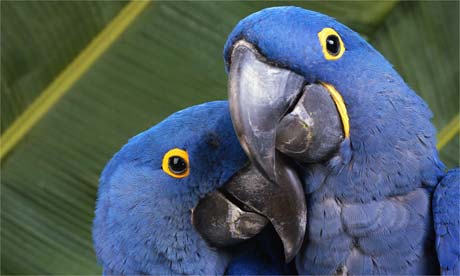
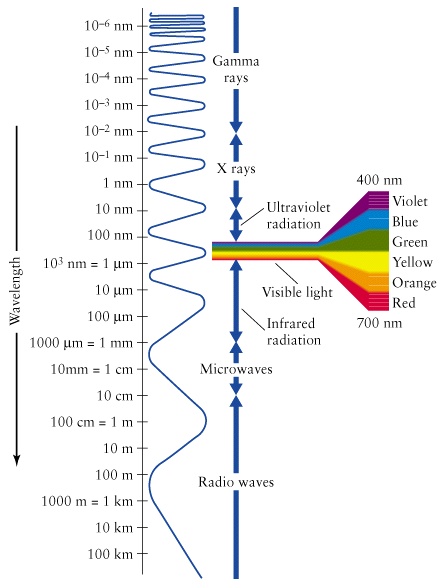
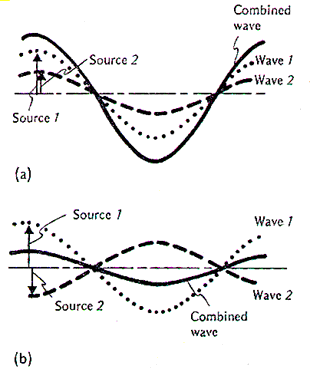
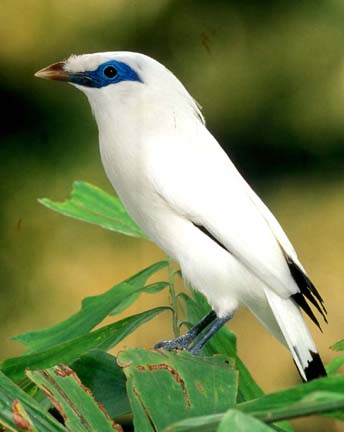
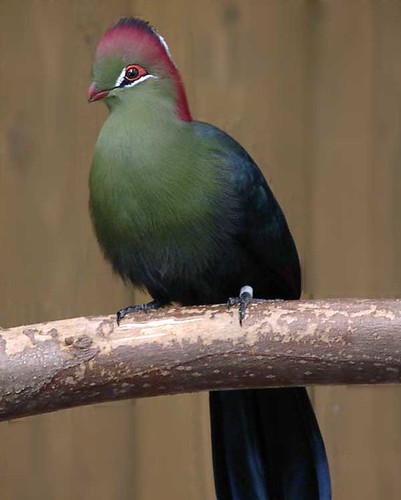
Oh wow, more stuff I never knew. Thanks!
Bob
Really interesting stuff. I had no idea that anything other than pigment was at work here.
Very cool article. Thank you!
Amazing. Every colour of the rainbow.
Breeders must have an interesting life, never quiet knowing what to expect.
For example, why don't birds routinely produce blue pigments? Why is blue such a rare color in animals? What is the evolutionary significance underlying this general lack of blue pigments among birds and other animals?
I don't have a direct answer, but it might not just be an issue for animals; consider that there are plenty of blue flowers, but even with genetic engineering techniques, it's proved anomolously difficult to produce a blue rose -- just sticking in genes from other species seems to be foiled by network effects. There may be some underlying energetic barrier making blue pigments difficult enough, that in many cases schemochromic effects just "get there first".
Interestingly, blue colors are difficult in technology too, because of the increased energy levels required. (For example, in blue and white LEDs and lasers.)
I always assumed the scarcity of blues, even for reflective colors, where coupled to the Tyndall effect (as I now learn it is called; being a physicist I have been taught to call it by its mechanism of Rayleigh scattering). As blue light is scattered and presumably more absorbed the intensities in reflecting ambient light should be less. I assume our brains adjust to the difference since we don't notice it much.
But do all animals, especially hunters? Or in other words, if it is easier to signal or more important to camouflage in reds and greens, wouldn't blue automatically be a less common trait?
To test that we could look at the same situation in sea water. Here blue light is less absorbed. And now you biologists have to tell me if blue colors are more or less scarce in sea animals.
Meanwhile, I can hash this out a little. Blue fishes and snails are the ones you remember, so my personal impression won't tell me much. But AFAIU reds and yellows often signals danger on land, in wasps and coral snakes for example, while I can think of at least one yellow and blue warning signal in the sea, the blue-ringed octopuses. So I assume I find weak support here.
(But it is insufficient to explain scarcity of blue pigmentation, because wikipaeding on sea animals, they still make blue color by preferential scattering. With one known exception only, despite large groups having access to blue pigments in the form of haemocyanins. Drat! :-P)
Torbjörn: Typo watch: The "Tyndall Effect" link is broken. And using your oxygen carrier as a pigment might not be too healthy....
Oh. Sorry about the link, but it's the Wikipedia article.
I dunno about the blood pigment, isn't that what primates may use for sexual display (female chimps display of estrus, female human lips, et cetera)?
True, but the primates are exposing pre-existing areas of circulation.
I was thinking of the equivalent of using hemoglobin as a non-circulating skin pigment, which makes me think of binding oxygen into the skin (and not having a way to release it). (Of course, for marine invertebrates, having their bloodflow visible might imply a thinner shell, or at least exposing a chart of where parasites could most easily get a nice drink....) Whatever, it's just a passing (circulating? ;-) ) thought.
(late to the party, followed link from recent post) Awesome info! I had no idea that there were such mechanism deciding plumage color. I feel enlightened.
Why do you report the light distortion effect in feathers as Tyndall effect when that has been disproven? The article you quote by Prum et al showed that the light distortion effect is constructive interference not Tyndall effect. The colour produced might be similar and it is still dependent upon structure but the physics involved is different. The difference is explained clearly by Andrew Parker in his book, Seven deadly colours: the genius of nature's palette and how it eluded Darwin.
The underside of a blue jay's blue feather looks dark grey. Without the structure, you're seeing only the dark pigment.
And turacos also produce a non-caretenoid red pigment, turacin, a metal-based porphyrin, the same class of compound as the haem found in haemoglobin, although the metal is copper rather than iron as can bee seen in the following:
Violaceous Turacos, Musophaga violacea (© Joseph Trotz, 2008)
Red-crested Turaco, Tauraco erythrolophus, (© Jhinuk Chowdhury, 2006)